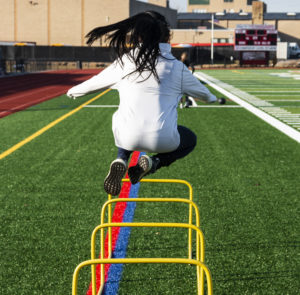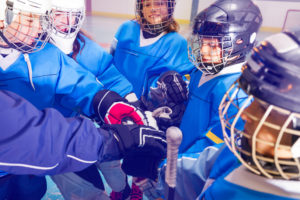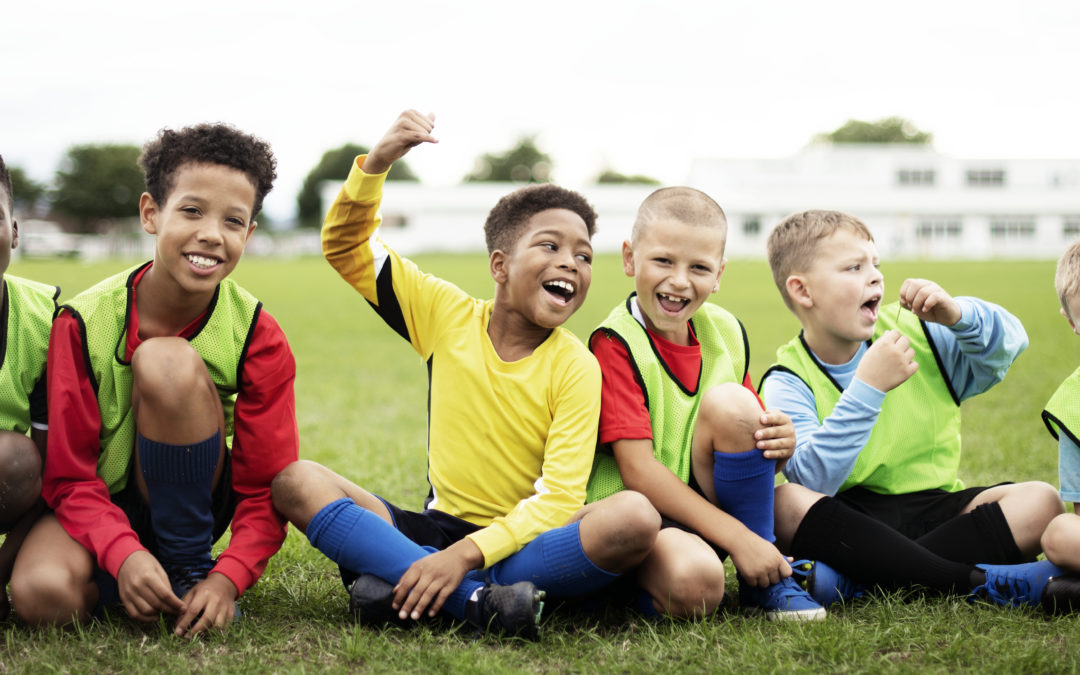In this 4-part series we answer the question about the optimal ages young athletes should learn the skills that will translate into better movement, coordination, sports skills, and overall physical literacy.
This guide will make the case for a strategic, progressive training model that will take into account periods of rapid brain development where specific skills are optimized.
In Part 1 we’ll talk about the rationale for progressing through three training modes, sensory awareness skills, coordination training, and fundamental movement skills. You will also be introduced to the periods of rapid brain development that are most important as well as what skills to focus on at four distinct periods of youth development from 2 to 18 years old.
These training modes introduced at the right time will optimize learning and lay a foundation for better movement, less frustration and eventually a lifetime love of movement and physical activity.
The pressure is on!
I have a 3-year-old and a six-year-old, and I know that their rapidly developing brains are fertile ground for learning skills they will have for a lifetime.
Whether it is music, math, a foreign language, or physical skills, the period before puberty is a crucial time to take advantage of the increased neural and synaptic plasticity of the brain to learn new things.

This time before puberty is a developmental window where the brain and nervous system are undergoing rapidly increased development. This is when they are “open for business” and ready to lay down neural pathways.
Following are the 4 periods of accelerated early brain maturation that open unique windows of opportunity for the development of athletic skills. Note that the time between the ages 6 and 12 is particularly significant.
-
15 – 24 months old
-
6 – 8 years old, with heightened remodeling of the cerebral cortex, which ultimately changes dendritic patterns and increases nerve density.
-
10 – 12 years old with the cerebral cortex preparing for the transition into puberty
-
18 years old
Because of this increased brain plasticity during these years, it is important young athletes are introduced to a variety of different movement skills. When these skills are progressively “built” in an age-appropriate program progression, a long-term foundation of athleticism is the outcome.

This long-term foundation begins with establishing sensory awareness and coordination skills as early as possible, then taking the time to properly introduce and fine-tune the fundamental movement skills needed for sports and other activities.
Even within the years prior to puberty there are unique windows of developmental opportunity to focus on different aspects of sensory awareness, coordination, and fundamental movement skills.
The chart below represents how coaches can match a child’s age with a focus on different skills.
2 – 4 YEARS OLD:
1) SENSORY AWARENESS SKILLS
2) FUNDAMENTAL MOVEMENT SKILLS
5 – 7 YEARS OLD:
1) FUNDAMENTAL MOVEMENT SKILLS & SENSORY AWARENESS SKILLS & BASIC COORDINATION TRAINING
8 – 10 years old:
1) ADVANCED COORDINATION TRAINING
2) FUNDAMENTAL MOVEMENT SKILLS & SENSORY AWARENESS SKILLS
9 – 14 years old:
1) COMPLEX MOVEMENT SKILL COMBINATIONS
2) FUNDAMENTAL MOVEMENT SKILLS
3) ADVANCED COORDINATION TRAINING
4) SENSORY AWARENESS SKILLS
15 – 18 years old:
1) SPECIFIC SPORT OR ACTIVITY
2) COMPLEX MOVEMENT SKILL COMBINATIONS
3) FUNDAMENTAL MOVEMENT SKILLS & SENSORY AWARENESS SKILLS
It’s important to note that age is merely a general guideline. These suggestions are based on average rates of maturity for the neuromuscular system. Genetics, level of engagement, and the age a child becomes involved with a program can have an impact on progression.
When a coach understands the process of building skills and how this process relates to age/readiness, they maximize opportunities for success while minimizing frustration.
In the subsequent parts of this series, we’ll look at how the above skill focuses can be integrated into a training model for children as they mature. Next, we will look at when and how to develop a foundation of sensory skills.
Stay tuned…

References for Age Related Training Goals for Young Athletes
Cratty, B. J. (1986). Perceptual & motor development in infants & children (3rd ed.). Englewood Cliffs, NJ: Prentice-Hall.
Drabik, J. (1996). Children & sports training: how your future champions should exercise to be healthy, fit and happy. Island Pond, Vermont: Stadion Publishing Company, Inc.
Gallahue, D., & Cleland Donnelly, F. (2003). Developmental Physical education for all children (Fourth ed.). Champaign, Illinois: Human Kinetics.
Gambetta, V. (2007). Movement aptitude and balance. In Athletic development: The art
& science of functional sports conditioning (pp. 145-149). Champaign, IL: Human
Kinetics.
Graham, G., Holt/Hale, S. A., & Parker, M. (2013). Children moving: A reflective approach to teaching physical education (9th ed.). New York, NY: McGraw-Hill.
Thelen, E. (1995). Motor development: A new synthesis. American Psychologist, 50(2), 79-95.
Viru, A., Loko, J., Harro, M., Volver, A., Laaneots, L., & Viru, M. (1999). Critical periods in the development of performance capacity during childhood and adolescence. European Journal of Physical Education, 4(1), 75-119.
Craig Valency, MA, CSCS, president and co-founder of SPIDERfit, has been a personal trainer for the last 11 years. He is currently working at Fitness Quest 10 in San Diego, an elite personal training and athletic conditioning facility. He specializes in youth strength and conditioning programs that promote physical literacy, injury prevention and optimal performance. Along with training youths from 6 to 18 years of age for general fitness, Craig has also worked with some of the top junior tennis players in the world. He has been a physical education consultant for the Stevens Point school district in Wisconsin for the last 3 years, helping revamp the district wide programming for the K-12 PE curriculum. Craig earned his bachelor degree from UCLA, and Masters Degree in Kinesiology from San Diego State University.





Connect with SPIDERfit!